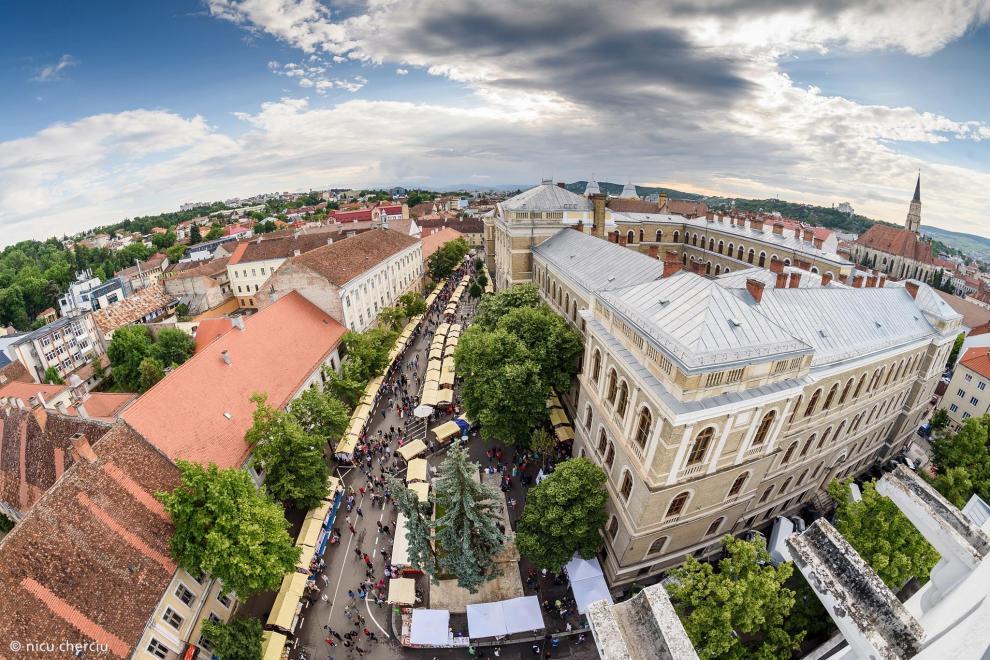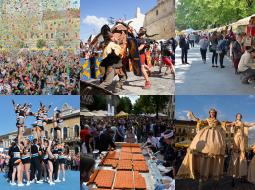Thessaloniki gets ready for its metro launch in November
The underground rapid transit lines have been under construction for almost two decades due to various project delays
 TheMayor.EU logo
TheMayor.EU logo 
The ancient capital of Dacia Porolissensis, Cluj-Napoca was recorded for the first time by Greek geographer Claudius Ptolemy (AD 85 - 165) two thousand of years ago. It was elevated to municipality during the reign of the Emperor Hadrian under the name of Municipium Aelium Hadrianum Napoca and later to colony, around AD 180 underMarcus Aureliusor under Commodus.
The Colony Aurelia Napoca had institutions, a local senate, magistrates, a people’s assembly, in other words, the status of any other city in the Roman Empire. The first documentary record of the city goes back to 1173 and refers to the settlement as Clus (in Latin “surrounded by hills”). Other names it had were Kolozsvar (in Hungarian) and Klausenburg (in German). Klausenburg was one of the seven medieval Saxon cities in Transylvania. Its first Romanian name was Clus, often written Klus, and in 1974 it was changed to Cluj-Napoca. The ideal geographic position of the city, situated at the crossroads that linked East, Central and South Europe, determined its specific features, that is, ethnocultural pluralism and material development.
Although the city underwent a strong decline because of the barbarian invasions following the Aurelian withdrawal in 271, in the Middle Ages it had a flourishing civilization and accumulated economic, artistic and cultural values which led to its being assigned a super-status, that of a “treasure-city”, which was not a common practice among the cities at that time. In 1316 King Charles of Anjou granted it a series of privileges which conferred upon the city the status of royal city (free city); among those privileges the most important were the right to have its own administration, the right to judge, free trade, the right to built churches and cemeteries etc. In 1405 King Sigismund of Luxembourg granted it new privileges, including the right to extend its fortifications.
During the dualist Austro-Hungarian period Cluj experienced a significant urban growth, benefiting greatly from western influences, despite the fact that the political effects of the regime were negative. The Romanian people’s attempt to achieve national affirmation reached its climax during the Revolution of 1848 when the Memorandum was drafted and became reality once Transylvania and Romania were unified.
Source: itfrromania.wordpress.com
Cluj-Napoca is the capital of the historic region of Transylvania. The city is the largest in the Nord-Vest development region, equalized to the NUTS-II regions in the European Union. The population is over 412,000 inhabitants, and besides Cluj-Napoca, there are 17 communes.
The city is divided into 15 districts laid out radially. The local government intends to develop local administrative branches for most of the districts. Because of the last years' massive urban development, some areas of Cluj were named as districts, but most of them are still construction sites.
The city hosts the palace of the prefecture, the headquarters of the country council and the prefect, who is appointed by Romania's central government. The prefect himself is not allowed to be a member of a political party, as his role is to represent the national government at the local level, acting as a liaison and facilitating the implementation of National Development Plans and governing programmes at the local level. Much like all the other local councils in Romania, the Cluj-Napoca local government, the county council and the mayor are elected every four years by the population.
Cluj-Napoca is an important economic centre in Romania. Famous local brands that have become well-known at a national, and to some extent international level, include: Banca Transilvania, Terapia Ranbaxy, Farmac, Jolidon and Ursus breweries.
Much of Romania's software/IT activity is centralized in Cluj-Napoca, which is quickly turning into the country's technopolis. Nokia invested 200 million euros in a mobile telephone factory near Cluj-Napoca, it also opened a research centre in the city. The city houses regional or national headquarters of MOL, Aegon, Emersen, De`Longhi, Bechtel, Friesland Campina, Office Depot, Genpact, New Yorker and Bosch.
Furthermore, Cluj-Napoca is an important regional commercial centre, with many street malls and hypermarkets. Eroilor Avenue, Napoca and Memorandumului streets rank among the most expensive venues.

Within Cluj-Napoca one can find a number of landmark buildings and monuments. Among them is the Saint Michael`s Church in Unirii Square, which was built at the end of the 14th century in the Gothic style of that same period. It was only later in the 19th century that the Neo-Gothic tower of the church itself was created - it remains the tallest church tower in Romania to this very day.
Cluj-Napoca also hosts a number of cultural festivals of various types. They occur throughout the year but are far more frequent during the summer months. The city boasts a diverse and growing cultural scene, with cultural life exhibited in a number of fields, including the Visual arts, performances and nightlife. The city's culture covers its entire history, dating all the way back to Roman times when the city's initial construction first began, leaving an ever-present mark on the urban layout (centered on today's Piața Muzeului) as well as the remaining ruins. However, in later centuries, the now medieval town saw a shift in its centre towards new civil and religious structures, notably St.Michael`s Church.
Address: Calea Moților 3, Cluj-Napoca 400001